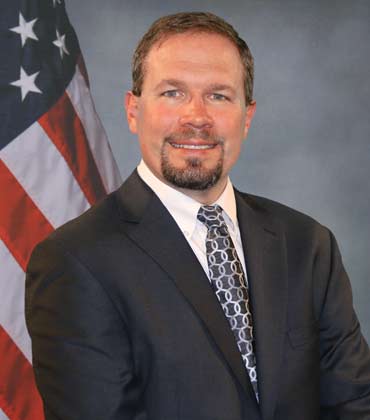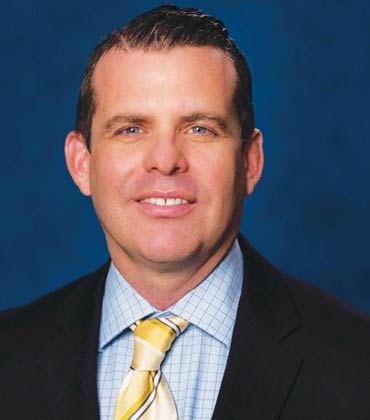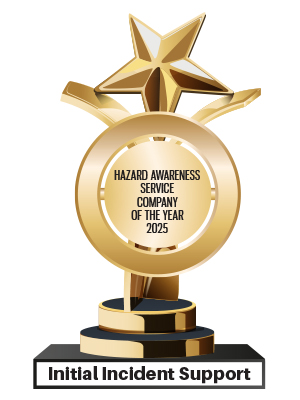Thank you for Subscribing to Gov Business Review Weekly Brief
Gov Business Review: Specials Magazine
When it comes to emergency management, one thing is certain: time and accuracy can mean the difference between disaster and salvation. The ability to act quickly, backed by precise information, has always been a goal for emergency responders. However, for years, many decisions were made with incomplete data or on-the-ground intuition. Initial Incident Support, LLC is working to change that. By providing real-time, actionable intelligence, the company is revolutionizing how emergencies are managed, offering critical tools to ensure that responders, decision-makers, and communities can act with confidence during their most vulnerable moments. The company was founded by Tim Werle, who, with the assistance of others, developed the FIRIS Fusion Center to align with Orange County Fire Authority Fire Chief Brian Fennessy’s vision for intelligence gathering and distribution. Tim established the workflows that currently guide its operations. From FIRIS’s inception to its current status, funded and managed by Cal OES, he has been involved every step of the way. IIS employs two Fusion Manager Supervisors, and 18 Fusion Managers. Each Fusion Manager has held a leadership position within the Fire/EMS service and has extensive experience working with incident management teams throughout California and the country. Additionally, each Fusion Manager has been performing this role since the FIRIS program was first developed and tested. “Our mission is to provide intelligence, surveillance, reconnaissance, and awareness for all-hazard incidents and events to support decision-making and risk management,” says Werle. A New Standard in Crisis Management Emergency response has traditionally relied on a mix of experience, limited situational data, and gut instincts to guide action. While these methods have saved lives, they also have limitations. The fast pace of wildfires, hurricanes, oil spills, and other disasters often outstrips the capacity of responders to gather and analyse the necessary data. This gap in information can lead to missed opportunities, wasted resources, or decisions that inadvertently place people and property at greater risk. Tim Werle understands these challenges better than most. With over 32 years in emergency service and extensive experience in incident management, he has seen firsthand how critical—and often elusive—timely information can be. “In those crucial early hours of an emergency, every decision matters,” Werle explains. “What we’re doing at Initial Incident Support is giving emergency leaders access to tools and data they’ve never had before. It’s not just a game-changer—it’s a life-saver.” At the heart of Initial Incident Support’s operations are its two Fusion Centers, located in Northern and Southern California. These hubs operate around the clock, combining the expertise of experienced Fusion Managers—we are all former firefighters, not many of us, all of us—with cutting-edge technology and data analysis from Fusion Modelers at the University of California, San Diego (UCSD). Together, they gather and process streams of information from sources such as dispatch data, live camera feeds, and radio traffic to create a clear and detailed picture of unfolding emergencies.
Top Civic Engagement Platform
Accela is leading the charge in cloud-based software solutions designed to modernize local and state governments. With a mission to make government processes more efficient, it provides solutions that simplify permitting, licensing, and code enforcement. With end-to-end support, Accela ensures a smooth transition to digital tools, from installation to training and ongoing optimization. At the core of its offerings, the cloud-based Civic Platform automates tasks, enhances citizen engagement, and improves government efficiency by connecting departments and breaking down bureaucratic silos. Accela enhances citizen engagement with self-service portals, allowing residents to apply for permits, track applications, and receive real-time updates for greater transparency and accessibility. Its mobile-first design enables government employees to work remotely, reducing paperwork and boosting productivity. The highly configurable platform streamlines processes with automated approvals, notifications, and workflow management, while built-in compliance tools ensure regulatory adherence. Robust analytics and Microsoft Azure cloud hosting provide top-tier security, reliability, and scalability. For agencies seeking rapid digital transformation, Accela offers ready-to-use civic applications. The permitting solution expedites approvals with online submissions and real-time tracking. The licensing application simplifies business and occupational license management for quick renewals and compliance tracking. The code enforcement solution enhances inspections, violation tracking, and compliance monitoring, reducing administrative bottlenecks. From Bottlenecks to Seamless Service Government agencies often struggle with inefficient service models—slow approvals, redundant paperwork, and fragmented communication— causing delays that hinder businesses, community growth, and resident satisfaction. Accela’s modern digital infrastructure streamlines operations, automates administrative tasks, and enhances interdepartmental collaboration.
CXO INSIGHTS

A Portrait Of A Young Emergency Manager
Nicholas Thorpe, Director of Emergency Management, Franklin County

Strengthening Communities through Preparedness and Strategy
Sara Williams, Director of Homeland Security and Emergency Management, City of Killeen

Organizational VS Personal Preparedness
Joe Moudy, Director of Emergency Management, City of Lubbock

Strategic Emergency Management for Disaster Management
Stephen Willoughby, Director for Emergency Communications, Preparedness & Response, City of Richmond

The Key to Effective Emergency Management: Strong Structure and Employee Wellness
Ryan Turner, Director of Emergency Management, City of Henderson

Emergency Management the Network Specialist
Pabel Troche, Interim Fire Chief, City of Roswell

911 Systems: The Late Bloomer in Emergency Communications
Paul Filla, Project Manager, Public Safety, Lee County
IN FOCUS
Navigating the Evolving Landscape of Hazard Awareness
The importance of hazard awareness services has significantly grown as industries face an expanding range of threats that can affect the safety of their workforce and the continuity of operations.
Improving Public Transport: A Roadmap for Urban Mobility
Authorities should improve service frequency, accessibility, safety, comfort, and cost to make public transportation a popular option in urban areas.
EDITORIAL
Transforming Communities with Hazard Awareness Initiatives
In today’s evolving environment, hazard awareness is critical. Individuals need to understand what constitutes a hazard and take preventive measures to avoid situations that could endanger lives and well-being, whether at work, at home, or in the community. Hazard awareness involves recognizing potential dangers and fostering a safety culture, enabling people to minimize risks and respond effectively to threats. Due to increasing workplace injuries and stricter regulations, the global market for hazard awareness is projected to reach USD 30.3 billion by 2028, with a CAGR of 14.0 percent from 2023. Worker awareness of injuries and hazards is essential in any work environment. Hazards, both visible and hidden, can arise in many areas. To prevent accidents, injuries, and fatalities, organizations should implement ongoing safety training and effective risk communication as part of their standard protocols for risk assessment. Technology is crucial for detecting and preventing hazards. Introducing AI-based monitoring systems, smart sensors, and predictive analytics is transforming the ability to identify potential threats. These tools provide real-time data that authorities and employers use to mitigate risks. Whether dealing with an accidental chemical spill, equipment failure, or fire, these technologies help anticipate threats before they escalate into crises, ultimately saving lives and resources. In addition to physical hazards, there is an increasing focus on mental health and well-being. Stress, anxiety, and burnout are now recognized as significant threats, particularly in high-pressure environments. Addressing these issues is just as important as ensuring physical safety. Hazard awareness should begin at home with essential actions such as child-proofing, ensuring fire safety, and managing household chemicals. The rise of modern technologies, like smart home alarms and security systems, has made it easier for families to protect their homes from various hazards. Policies and regulations are essential for advancing hazard awareness by setting safety standards and mandating training and risk assessments. They promote accountability, encourage compliance, and facilitate community collaboration. This framework empowers organizations and individuals to manage safety risks proactively. Hazard awareness fosters a collective sense of responsibility. Through education, technology, and a shared commitment to safety, safer communities can be created for everyone.









